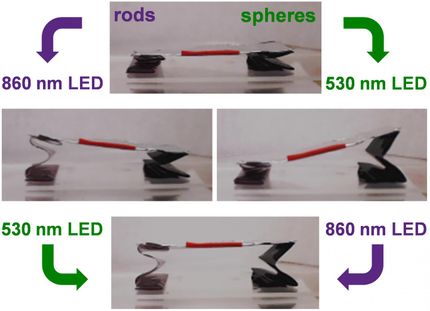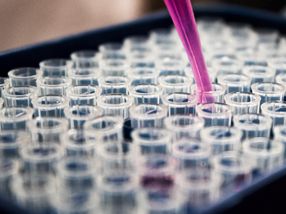Sophisticated nano-structures assembled with magnets
What do Saturn and flowers have in common?
Advertisement
What do Saturn and flowers have in common? As shapes, both possess certain symmetries that are easily recognizable in the natural world. Now, at an extremely small level, researchers from Duke University and the University of Massachusetts have created a unique set of conditions in which tiny particles within a solution will consistently assemble themselves into these and other complex shapes.
By manipulating the magnetization of a liquid solution, the researchers have for the first time coaxed magnetic and non-magnetic materials to form intricate nano-structures. The resulting structures can be "fixed," meaning they can be permanently linked together. This raises the possibility of using these structures as basic building blocks for such diverse applications as advanced optics, cloaking devices, data storage and bioengineering.
Changing the levels of magnetization of the fluid controls how the particles are attracted to or repelled by each other. By appropriately tuning these interactions, the magnetic and non-magnetic particles form around each other much like a snowflake forms around a microscopic dust particle.
"We have demonstrated that subtle changes in the magnetization of a fluid can create an environment where a mixture of different particles will self-assemble into complex superstructures," said Randall Erb, fourth-year graduate student. He performed these experiments in conjunction with another graduate student Hui Son, in the laboratory of Benjamin Yellen, assistant professor of mechanical engineering and materials science and lead member of the research team.
The nano-structures are formed inside a liquid known as a ferrofluid, which is a solution consisting of suspensions of nanoparticles composed of iron-containing compounds. One of the unique properties of these fluids is that they become highly magnetized in the presence of external magnetic fields. The unique ferrofluids used in these experiments were developed with colleagues Bappaditya Samanta and Vincent Rotello at the University of Massachusetts.
"The key to the assembly of these nano-structures is to fine-tune the interactions between positively and negatively magnetized particles," Erb said. "This is achieved through varying the concentration of ferrofluid particles in the solution. The Saturn and flower shapes are just the first published examples of a range of potential structures that can be formed using this technique."
Original publication: Nature 2009.
Most read news
Topics
Organizations
Other news from the department science

Get the chemical industry in your inbox
By submitting this form you agree that LUMITOS AG will send you the newsletter(s) selected above by email. Your data will not be passed on to third parties. Your data will be stored and processed in accordance with our data protection regulations. LUMITOS may contact you by email for the purpose of advertising or market and opinion surveys. You can revoke your consent at any time without giving reasons to LUMITOS AG, Ernst-Augustin-Str. 2, 12489 Berlin, Germany or by e-mail at revoke@lumitos.com with effect for the future. In addition, each email contains a link to unsubscribe from the corresponding newsletter.




























































